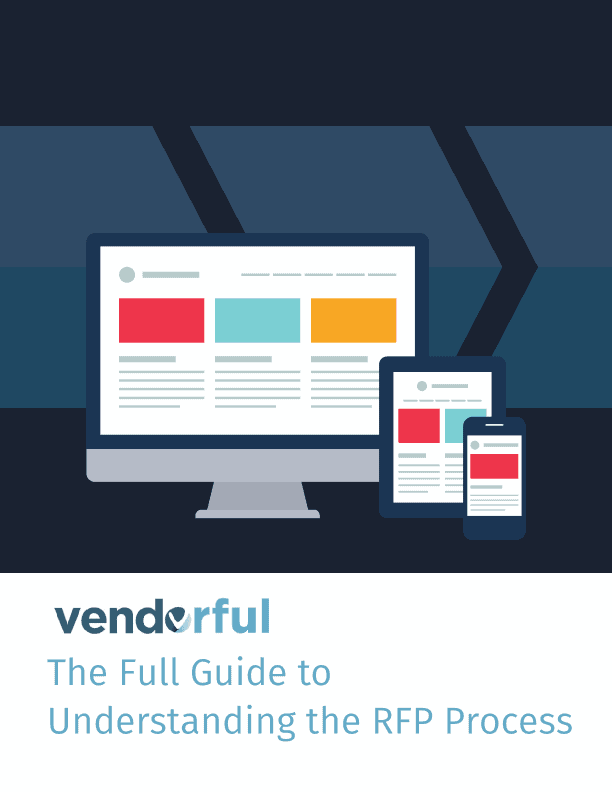In the past, we have offered bits of advice from top strategic sourcing and procurement professionals on how to improve procurement processes like RFPs. While their opinions are invaluable, they share a single perspective. Consequently, we think looking at the same problem from the counter viewpoint is a worthwhile endeavor... giving buyers access to the minds of vendors. And hey, Hollywood turned this concept into two movies: What Women Want (2000) and What Men Want (2019). So let’s figure out What Vendors Want (2020).
Interestingly, the team at Vendorful responds to a fair number of RFPs, oftentimes for RFP software. While that may seem quite meta, it actually makes a lot of sense. An organization that values the RFP can certainly justify issuing an RFP for RFP Automation Software. The requests we see run the gamut – from ridiculously complex to entirely too simple. In our view, an RFP should facilitate a streamlined and fair sourcing process while helping the buyer optimize for total value.
Of course, RFPs only achieve their goal when they’re done correctly. Today, we are putting on our metaphorical software provider hat to provide some key tips to help ensure that you are running your RFPs the right way.
1. Always do your research
Getting comfortable with the subject matter is hugely important. In fact, research should be the first step organizations take when they are kicking off new strategic sourcing events. Research helps in two ways. First, it reduces some of the information asymmetries between buyer and seller. (Unfortunately for buyers out there, the narrow focus of a vendor almost always confers an information advantage to the seller.) Second, it helps guide the requirements and qualification criteria for prospective suppliers. Sharing a clearly articulated vision and requirements makes it much easier for suppliers to provide useful bids.
In terms of depth of research, there is a sweet spot and it will vary based on the product or serviced being sourced as well as the criticality of that product or service to the business. Ultimately, the research should further inform your internally-generated “wish list” and become part of the RFP. By neatly framing your needs and desires as they relate to what is being sourced, you put the competing vendors in a position to submit highly-relevant bids. And not only will providing relevant information make the difference in getting a bid that corresponds with your goals, but it also reduces the likelihood of delays and confusion from vendors.
What vendors want: To deal with an educated prospective customer.
2. Remove bias when creating your RFP
RFPs are a great way to level the playing field for suppliers who want a genuine shot of winning your business. To that end, it is important to create your RFP without bias. "Where would bias come from?" you wonder. It’s not uncommon for companies to write their RFPs with a specific vendor already in mind…or to leverage an RFP that was developed by one of the competing vendors.
When you create an RFP based on a single supplier, you’re skewing the outcome of the entire sourcing event. Sometimes, it's clear to the supplier, based on the RFP itself, that the outcome of the process has been predetermined. If you have already decided which supplier you’re going to use, running an RFP is a terrible use of your time and the time of the included suppliers. If you are to invest the time in running a formal strategic sourcing event, do it the right way. You should use it as a tool to discover which of the suppliers best meets your actual goals. That doesn’t mean that you can’t have a pre-process favorite. But if you skew the RFP in such a way that no one else has a legitimate opportunity to win the business, you’re undermining your own process. Keep an open mind and run a fair competition; you might be surprised at the value some of the other suppliers can bring to your organization.
What vendors want: A fair opportunity to win your business.
Ready to master the RFP?
Check out our free guide to the RFP process.
3. Identify important dates
This is one of the most basic guidelines that businesses tend to overlook when it comes to writing RFPs. Remember to always spell out deadlines, pre-bid document submissions, initial responses, target implementation dates — all these are critical to a vendor’s ability to deliver quality work.
In many cases, details such as key dates are worked into the body of the RFP and tend to get lost. Suppliers find it helpful to have a separate section clearly detailing this information. Not only does it increase compliance from the suppliers; end, but it also ensures everyone, including you, is able to keep track of the timeline.
And while we’re on the subject of dates, please keep them reasonable. Sending out a 200-question RFP on a Friday afternoon with a submission date of the coming Monday is not fair to suppliers. It’s also not fair to buyers. You will get fewer bids and the bids you do receive will be of lower quality.
What vendors want: Ready access to key dates and enough time to complete the RFP.
4. Find the right balance with your questions
If you send out an RFP with very little structure or guidance governing the bids, you may be surprised at how different vendors can interpret the same information in different ways. On the other hand, if your RFP is simply a giant list of yes/no questions, you’ll have uniformity of response, but maybe insufficient insight to make an informed decision.
When you are scoring the bids, you will find it much easier to have an apples-to-apples format. So providing specific guidelines (or using specialized software) will help you do that. That said, the format should not blindly restrict the content. For example, if you are looking to source a software product and want to make sure that it doesn’t require a Ph.D. to figure out, you might ask a question like this: “Do you take steps to ensure your product has an easy-to-use interface?” Structured as a yes/no question, this gets at the heart of your requirement but does so in a coarse way. And we, as vendors, are eager to put our best foot forward and tell you all about our user interface decisions. In this case, you might consider asking for screenshots or video walkthroughs. Or perhaps you could ask for details about the vendor’s process for creating user interfaces.
Doing this allows the vendors some license to sell the virtues of their product. But it also allows you, the buyer, to make a more educated assessment based on specific information. So while we’re totally on board with requiring the response to follow a specific format or structure, we certainly appreciate having a little wiggle room to tell our story. And the bonus is that this extra flexibility also improves your ability to choose the product or service that is best for you.
What vendors want: To be evaluated on our merits and to be able to show you what those merits are.
Unlike the movies, there is no mind reading involved in strategic sourcing. Just ask and vendors will tell you what they want. Obviously, it’s your responsibility to accept only the good and fair parts of their guidance. (Believe me, they all want to write your RFP!) But by putting yourself in their shoes, you can improve the process for them and for you.
If you'd like to see how Vendorful streamlines and automates the RFP process for buyers, we invite you to schedule a demo.

